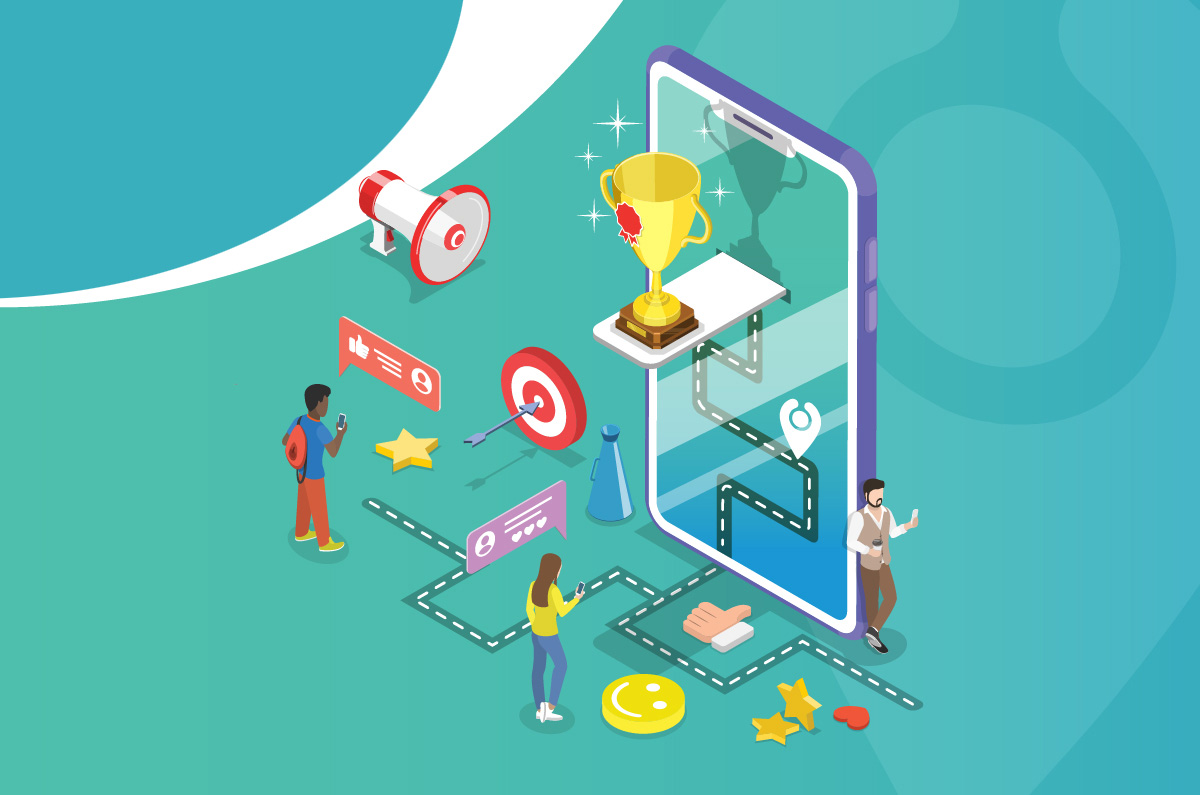Whether it is cricket, football, table tennis or carrom, playing games has always been addictive. It entices them to play again and again achieving the incentives of that game. With the transformation of games from indoor/outdoor to mobile phones, we see people sticking to their phone in playing games for a longer time. Games like PubG, Pokemon Go and Candy Crush are just a few examples. Considering these aspects retailers have discovered a new way to include in their marketing strategy – Gamification.
Gamification enhances the capabilities to acquire, engage, and retain customers. It typically involves applying games to applications and introducing a fun element that helps enhance the user experience. Motivating the user to perform certain actions or behaviours.
According to a study conducted by Gigya, it was found that gamification boosts engagement by one third, with online commenting rising by 13%, social media sharing by 22%, and content discovery by 68%.
Nike, an international brand for manufacturing footwear recently applied gamification to engage their customers across the world. In order to give a boost to their marketing and sales operations, they introduced an app Nike+ for their users to track physical activities. From walking, running to exercise count, the app stored users data which eventually helped them to track their progress. To provide motivation factor app also displays the data of other Nike+ users which created a kind of competition within the users. They introduced leaderboards where one can view the status of which individual gathered more counts. Basically, this gamification model was implemented to motivate the user to stay active helping them to gear up their sports shoes market.
By implementing the game elements, Nike was able to control 57% of the market by 2007 and 61% by 2009. The bar kept increasing and in 2013, there were 11,000,000 Nike+ members and it’s still counting as mentioned in gamification co.
As a brand owner or a retailer if you are having an app than including gamification will definitely gear up your sales. It is time to start building your strategy from defining an objective, identifying the target audience, including innovation factor and justify your brand.
Now, let’s take a look at a few important elements of Gamification you need to include while creating a customer engagement strategy through gamification:
Rewards
Rewards are the best way to fuel motivation. They not only motivate the users to keep going but also tempts a player to carry out certain actions which they would have avoided otherwise. A brand can make their users feel positive by giving something unexpected in the form of a reward.
Points and Badges
Users get a feeling of encouragement through points and badges. Which then brings a sense of accomplishment, and self confidence regarding their skills, qualities and interests. While achieving points and badges, users feel quite happy as they can flaunt their capabilities among their fellow participants.
Discounts/Offers
Who does not love discounts? Hardly anyone. Brands can include discounts as the user gathers certain coins or crosses a certain number of levels in a day. Discounts always attract users to get the best deal that benefits them in saving money. It helps to drive engagement and loyalty. If any customer receives a discount, they are more likely to come back in future too.
Conclusion
If you are trying to move the needle and thinking of ways to improve customer engagement, gamification can make it happen easily. As long as gamification drives customer engagement, it will fulfil its potential to provide an offbeat user experience.
A platform like LEAP is a perfect example. With gamification feature included, it enables brands or retailers to implement a reward system where one can set different incentives as the user clears each level of the game. For detailed understanding of Location Enabled Advertising Platform schedule a demo at www.leap.ooo

14,856 thoughts on “Gamification: A Trigger to Boost Customer Engagement”